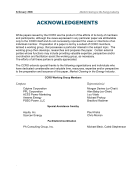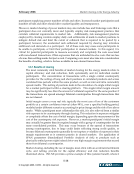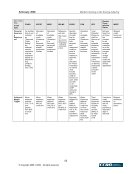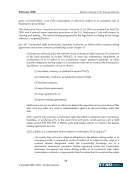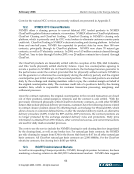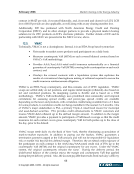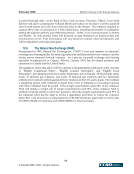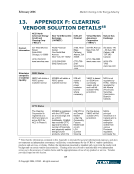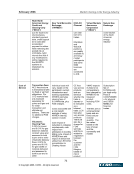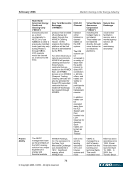February 2006 Market Clearing in the Energy Industry 5-21 © Copyright 2006, CCRO. All rights reserved. Because of bankruptcy law14 issues (e.g., the ambiguity and lack of case law dealing with FCMs, hence treatment differences by ISO/RTOs) ISO/RTOs may require a member participant to provide credit (either unsecured or secured) to be allocated among the various product markets15. An ISO/RTO credit policy may require a market participant to allocate credit among transmission, energy, capacity, FTR/TTC or virtual markets. Therefore, a member may have available credit for a certain product/market, but may need to reallocate it to another product or market, or post additional collateral depending on its activity and market price movements. Virtual Trading is an example of a market product that has wide-ranging credit and risk characteristics and interpretations among ISO/RTOs. The following table provides an example of product netting complexities in Virtual Trading markets products. While there may be other products that the various ISO/RTO’ s measure differently with respect to credit risk, Virtual Trading credit policies are the most striking difference, probably because of its more recent introduction and perceived risk. ISO/ RTO/ Pool Virtual Markets Policy CAISO No Market. ERCOT No Market MISO Allocation of existing/ remaining unsecured credit line ISO-NE Allocation of Unsecured line, or 100% liquid collateral Requires credit of a minimum of $500,000 NYISO 100% Liquid Collateral PJM Allocation of existing/ remaining unsecured credit line SPP No Market Generic Transmission Owner No Market WSPP No Market Virtual Trading, although commonly misunderstood, is simply strict financial trading in the RTO/ISO markets. In the true meaning of the phrase, no physical energy flows with a Virtual Trade. There are two types of trades that are considered as virtual. One is termed a decrement, the other an increment. In ISO/RTO markets there exist a day 14 Issues describing Bankruptcy implication with respect to netting can be referenced in Edison Electric Institute “Survey of the Legal Landscape Applicable to Master Netting Agreements, Part III Statutory Safe Harbors and Support for Netting, pages 13 through 23. http://www.eei.org/industry_issues/legal_and_business_practices/master_netting_agreement/legallandscape.htm 15 The biggest bankruptcy issue in RTO markets is that ‘spot’ deliveries are not ‘forward’ transactions under the Code (which requires two days between contract and delivery), and therefore are subject to ‘automatic stay or claw back’ provisions under the 90-day preference clause. Netting these markets against forward obligations could only be accomplished by an entity that clears both forward and RTO positions and can get around the ‘spot’ nature of the RTO markets.
Purchased by unknown, nofirst nolast From: CCRO Library (library.ccro.org)


